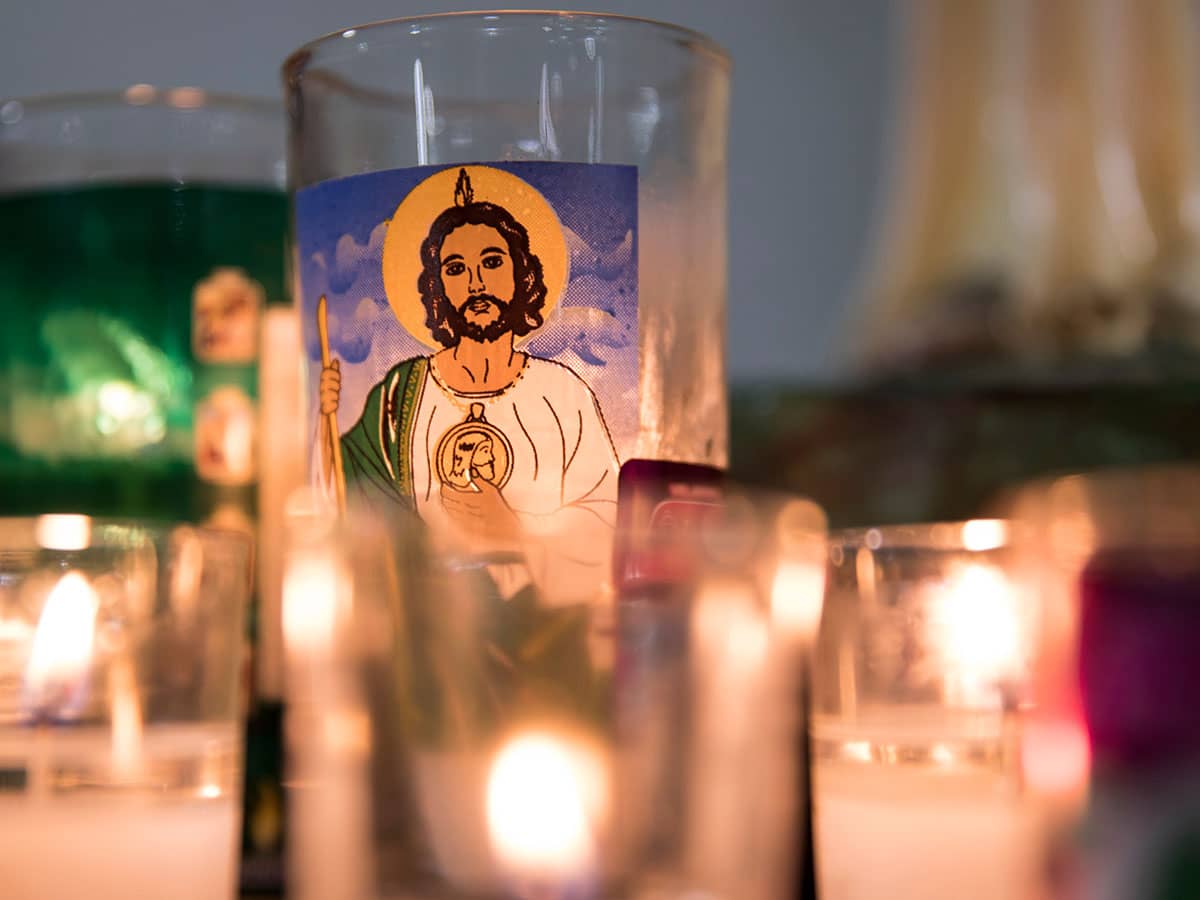Set against what had increasingly over the course of my investigation been exposed as a weak prosecution case are many positive reasons for believing that the She-Pope was more than a made-up story. The evidence of some 500 medieval writers cannot but impress. Senior papal servants, writing in books dedicated to their masters, endorse Joan unambiguously. Academics and inquisitors accept her as fact. Such widespread belief, filtering up to the pinnacle of power in the Catholic church, cannot lightly be dismissed as a Protestant plot, a fable, or a cipher for some other story of papal skullduggery. Why, for example, did Sienese pope after Sienese pope allow Joan's statue to stand in their home cathedral? The logical answer is that they regarded her, however grudgingly, as a predecessor.
 |
 |
 |
 |
| |||
 |
Yet this appeal can distract from the fact that Pope Joan is much more than a wonderful story. The Vicus Papissa, 'the street of the woman pope' where Joan gave birth and met her end, exists with its shrine, although her statue has been lost. The street was avoided because of Joan by papal processions. Likewise the strange chair for checking the pope's manhood exists and, travelers record, was used. The bust of Joan in Siena existed. And a playful illustration of her labor remains in Saint Peter's at the foot on the baldacchio over the main altar to this day.
And there are more immediate historical reasons for suggesting that Joan be restored to her rightful place among the popes. The details told by the chroniclers fit neatly with the middle of the ninth century. There was, for instance, a celebrated colony of English missionaries in Germany then--hence the name 'Joan the English,' though she was born in Mainz. And it is undeniably true that Greek-educated figures, as Joan was alleged to be, were prominent and revered in Rome at this time. Some, indeed, went on to be elected to the throne of Saint Peter thanks to the system which then prevailed--an unpredictable popular vote which favored the deacons collected around the dead pope, and which occasionally threw up a saintly and scholarly outsider.
All these essential details may have been mangled and exaggerated as the history of Joan was passed across medieval dining-rooms and library desks down the ages but, once ironed out and reassembled, make perfect sense in the context of their time. Nothing is out of place.
 |
 |
 |
 |
| |||
 |
Turning to the basic mechanics of Joan's disguise, I had established a convincing case that her physical sleight of hand was possible. The ninth century was a time when priests were told to shave off their beards. With her fair chin and upper lip, Joan would in previous centuries have been damned. In the ninth she could have thrived. Moreover, history shows that women have successfully passed themselves off as men to achieve positions of great power. Their bodies, especially in a frugal time like the Dark Ages, have been relatively easy to transform.
Weighing all this evidence, I am convinced that Pope Joan was an historical figure, though perhaps not all the details about her that have been passed on down the centuries are true.
For a century, since the work of the German anti-Joanite Professor Dollinger, those historians, scholars and believers who have stumbled across Pope Joan in ancient manuscripts or dusty corners of the Vatican Museum have dismissed her as a colourful legend. Talk of her has been deemed anti-Church. Writers who in other circumstances expend considerable energy investigating anything from the Turin Shroud to bleeding statues are content to toe the official line. Yet looking back into this episode in the history of the Church, however troubled and inglorious, is not anti-Church per se. In my own case knowledge has not put any distance between me, my church and my faith. If I had relied on the official explanations I would long ago have given up on the Church in frustration.
With such an uncomfortable slice of history as Joan--comprising equal measures of fact, distorted fact and the subsequent embroidery of well-natured but unsatisfactory fiction--chronology cannot be all. A dance to different tunes down the ages, Joan has fitted the mood of many periods, be they anti-clerical, anti-Catholic, feminist, romantic, or erotic. She has even, I was told by one who should know, become something of an icon for religiously minded transvestites.
I accept, of course, that some who have reached this stage of the investigation may pull up short of my qualified conclusion. I would ask them at least to admire Pope Joan's extraordinary tenacity down the centuries. Her story has survived all attempts to bury it because it has proved greater and longer lasting than any of the ways in which it has been communicated, the causes to which it has been annexed, or the groups who have chanced upon it. That has been its ultimate danger, and one specially relevant at a time when Catholic women, like Ludmila Javorova, are determined to have their claims to the priesthood recognized.
My own inclination, having lived and breathed Joan for six months, is that she achieved the papacy at a time when the office was hopelessly debased and corrupt, was moderately successful, but that her triumph was short-lived. She was uncovered, not in dramatic fashion in the Vicus Papissa, but when her 'outsider' mentality made her careless. The drawbacks of her secret achievement may even have outweighed the benefits and she could have voluntarily given herself up to life in a convent, a vow of silence, and the rewriting of history to exclude her.

